[ad_1]
Hidden deep in the green of Northern dense tropical forests, Ba Be National Park is undoubtedly one of the most beautiful sites for ecotourism across the country. As the park is endowed with a diverse ecosystem after thousands of years of geological formation, the words are not enough to describe the beauty of the land.
Dense evergreen forests on rugged mountains are nourished by 4 rivers of Ta Han, Bo Lu, Nang and Leng. Lying deep in the heart of the park are immense quiet lakes surrounded by chalky karst towers and winding jade-colored rivers. All comes to shape an amazing, unspoiled and quiet venue for savvy adventurous travelers to uncover the grandeur of nature in the North, this is also where the ethnic cultures of Tay, Nung, Dzao are perfectly preserved in rustic hamlets with stunning wooden stilt houses. More than a national park, Ba Be deserved to be the “green pearl of Bac Kan” in any and every possible means.
Where is Ba Be National Park
Set in the North-East province of Bac Kan, Ba Be National Park is a haven of beautiful lakes, shimmering rivers, and imposing mountains. Over 200 km northwest away from Hanoi, it is not only Vietnam’s 8th largest national park, but also ranks top among the most biologically intense zones in the country, recognized by the ASEAN Heritage Parks Organization.
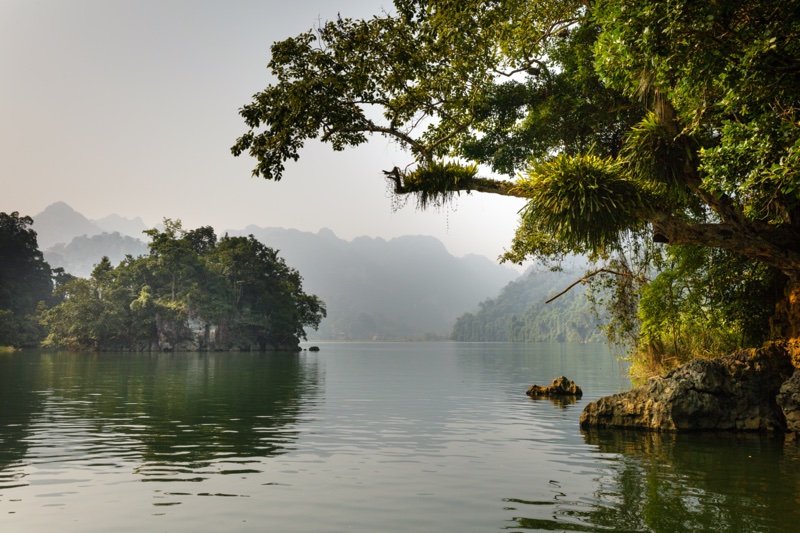 Ba be lake in Bac Kan
Ba be lake in Bac Kan
Officially established in 1992, the national park has built its solid reputation as an enchanting eco-tourism attraction for its fascinating scenery and diversified fauna and flora.
Best time to visit
Blessed with a cool year-round weather, Ba Be gives you a welcome at any season of the year. Dry season lasting from winter to spring is the ideal time for trekkers to discover the pristine trails coming across the thick tropical forests as the temperature ranges from 8-25 C with rare rainfall. Spring also marks the renowned Long Tong festival which is held on the 10th and 11th days of the first lunar month. During this time, the vibrant atmosphere pervades Ba Be with traditional rituals, unique song and dance performances of surrounding local ethnic minorities.
 Long Tong festival – Photo: nhandan.com.vn
Long Tong festival – Photo: nhandan.com.vn
Taking a trip from August to October, you will be mesmerized by the jade-colored waters of Ba Be Lake and golden rip rice fields in every corner of the area. Note that in the rain season, the Ba Be lake is filled with water from the Nang River and may become flooded sometimes.
How to get to Ba Be National Park
As Ba Be is one of the faraway tourist destinations in the North, shuttle bus and motorbike are the most common means of transportation to get there.
By shuttle bus
It is not difficult to find daily tourist shuttles from Hanoi or other Northern provinces to Ba Be national park. Departing from My Dinh bus station, you can hop on a local bus named Thuong Nga which takes you straight to the entrance of the national park. Alternatively, you can grab other buses to Bac Kan, ask them to drop you off at Cho Ra town then hire a motorbike (about 50,000VND) to finish the last 16km to Ba Be. Otherwise, there are also bus companies that offer a routine from Lao Cai (near Sapa) to Ba Be.
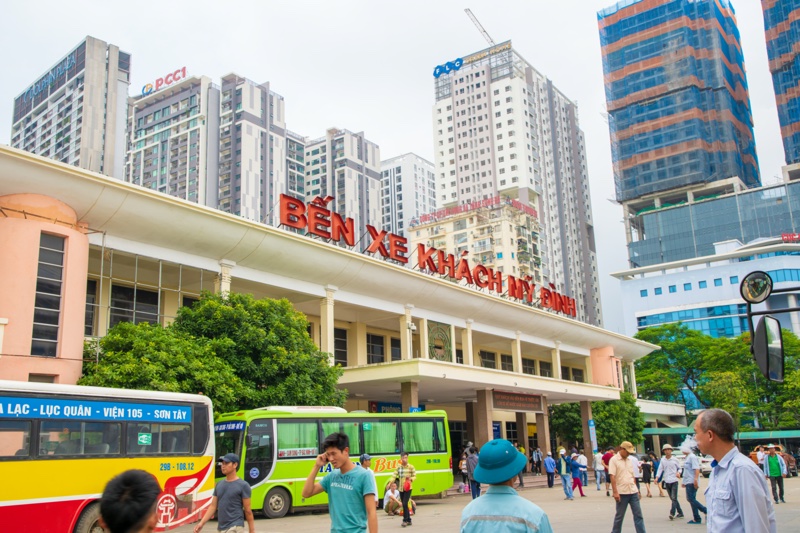 My Dinh bus station
My Dinh bus station
By motorbike
Visitors might have to spend about 6 hours riding on a motorbike through rugged roads to get to Ba Be but the marvelous scenery is definitely worth your time. Follow National Highway 3 (QL3), the common route is Soc Son (Hanoi) – Thai Nguyen – Cho Ra – Ba Be. From the seamless urban roads of Hanoi to winding rural trails of Ba Be, this is the second-to-none way to admire the untouched natural beauty of marvelous mountains and rustic, traditional hamlets of ethnic minorities.
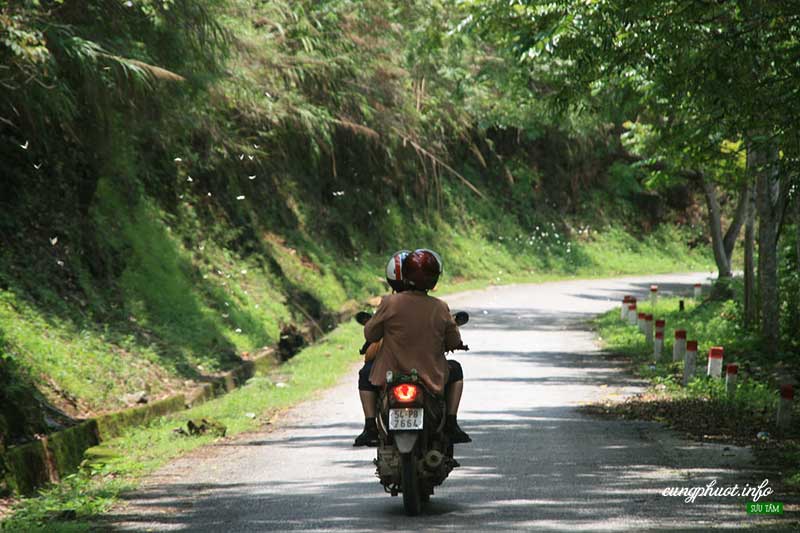 Photo: cungphuot.info
Photo: cungphuot.info
Major Attractions
Ba Be Lake
Lying deep in the core zone of Ba Be National Park, Ba Be Lake is deserved to be the ace attraction of the area thanks to its unspoiled nature and impeccable beauty. Listed top on the list of 20 world’s beautiful lakes by UNESCO, it combines 3 freshwater lakes named Pe Lam, Pe Lu, Pe Leng in a total area of 5,000 km2. Being the largest freshwater lake in Vietnam, Ba Be Lake boasts its unspoiled beauty for hundreds of years with beautiful emerald waters surrounded by stunning forests. Sitting on a boat, feast your eyes on the panoramic view of chalky karst mountains and evergreen foliage, listen to the sound of the birds, you will be back to nature at its purest and beyond.
 Landscape of Babe lake
Landscape of Babe lake
Thac Bac Waterfall
Hidden in the dark green of the forest, the name Thac Bac literally means Silver Waterfall in Vietnamese. Situated in the humble Vang village, about 8km south of Ba Be Lake, this awe-inspiring multi-layer natural waterfall is formed by numerous small lakes in the area, creating a marvelous picture of water with dazzling white bubbles rushing off the vertical cliffs as a white silk ribbon embracing the steep mountains.
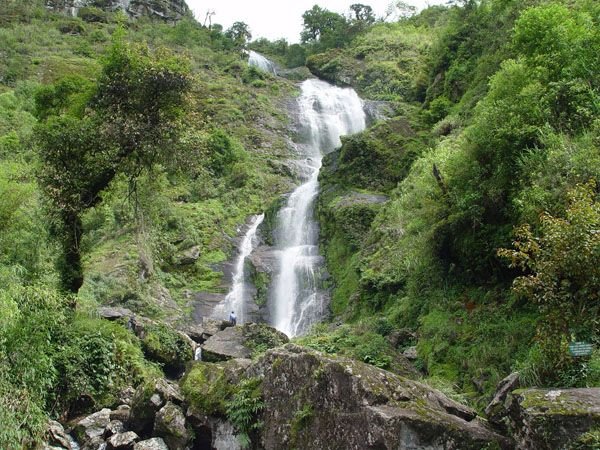 Thac Bac waterfall
Thac Bac waterfall
Hua Ma Cave
Untouched by humans until recent years, Hua Ma Cave perfectly retains its pristine and enigmatic beauty. Located deep inside Co Don Mountain (Lonely Mountain) and Ma Forest (Ghost Forest), this mysterious cave enchants thrill seekers to come and discover. Thousand years of geological change have built up a spectacular cave with elaborate stalagmites and stalactites sparkling like jewelry.
 Hua Ma cave – Photo: @joeenge
Hua Ma cave – Photo: @joeenge
Puong Cave
Formed when the Nang River flows through the foot of Lung Nham karst mountain, Puong Cave is a 2-entrance cave only accessible by waterway. Not only featuring colorful stalagmites, the cave also boasts poetic scenery of the shimmering river winding the white limestone mountain ranges.
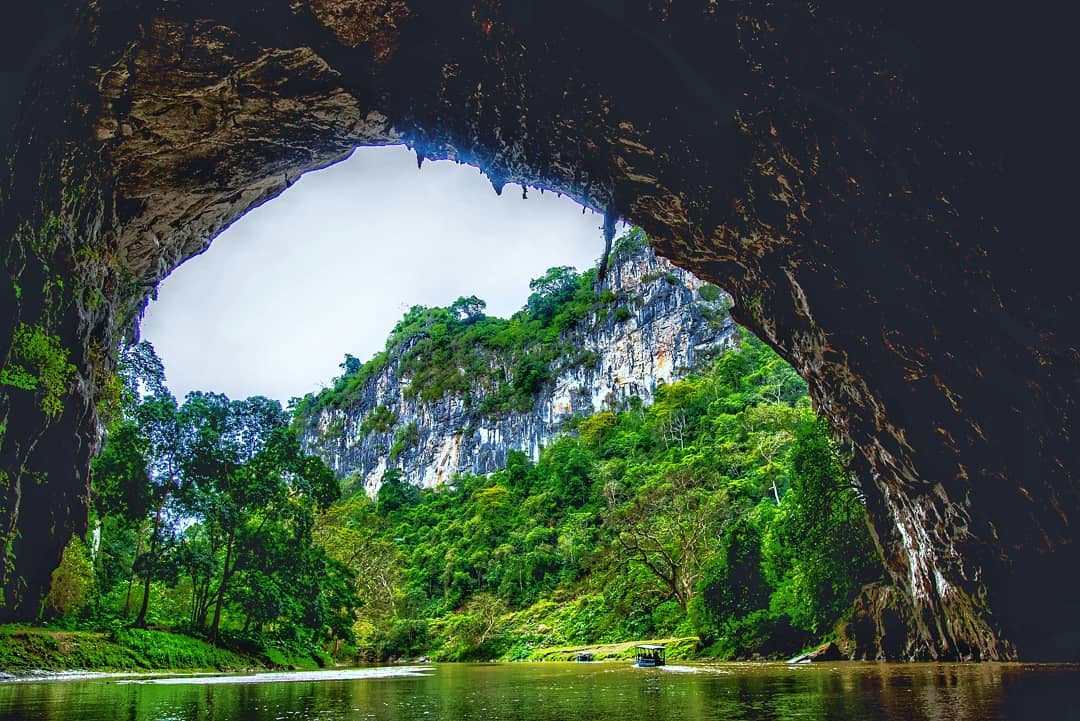 Puong cave – Photo: @hangnga_88
Puong cave – Photo: @hangnga_88
Dau Nang Waterfall
Nestled on the far west side of the national park, Dau Nang waterfall, unquestionably, impresses travelers at the very first glimpse with its striking beauty. The fall is located between two karst towers, set in 3 layers of rugged rocks under the thick foliage of tropical forest. The breathtaking scenery of imposing waterfalls and the primitive nature of the forest blend perfectly to shape one of the extremely impressive attractions in Ba Be.
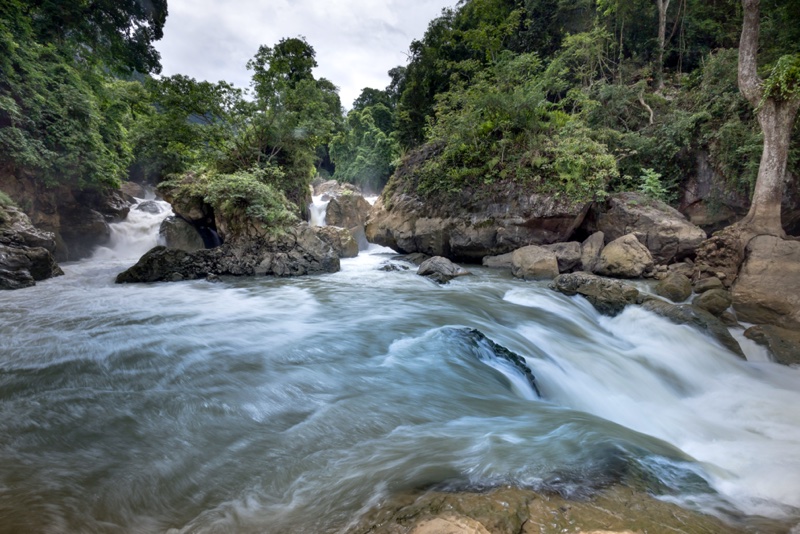 Dau Dang waterfall
Dau Dang waterfall
Pac Ngoi Village
Peacefully set on the banks of Leng River, Pac Ngoi Village is a tranquil village filled with wooden stilt houses of Tay ethnic groups. Facing the peaceful river and leaning on the foot of a chalky limestone mountain, the village beyond looks like the magical land stepping out from a fairy tale. Nothing could be better than to stay on a rustic stilt house, enjoy savory specialties, visit the lake by canoe then catch fish on the streams like a local.
 Bac Ngoi village
Bac Ngoi village
Fairy Pond
Perching on the top of a sloping hill, Fairy Pond is a jade-colored water lake with an area of over 3,000 m2, bordered by karst mountains and primeval jungles. The name of Fairy Pond is inspired from the ancient folk of a local hunter when he accidently passed by the pristine pond and caught the sight of the seven beautiful fairies bathing here.
 Fairy pond -Photo: @uyen.nheo
Fairy pond -Photo: @uyen.nheo
What to do in Ba Be National Park
Trekking in Ba Be
Dominated by the Pia Booc mountain range at an altitude of 1527m above sea level, Ba Be is well-regarded as one the best trekking sites across the country. The gifted-by-nature land boasts its unrivaled beauty through majestic mountains, immense forests, poetic rivers, flowing streams, imposing waterfalls and lush paddy fields, making up a great base for adventurous souls to explore the Northern wild nature.
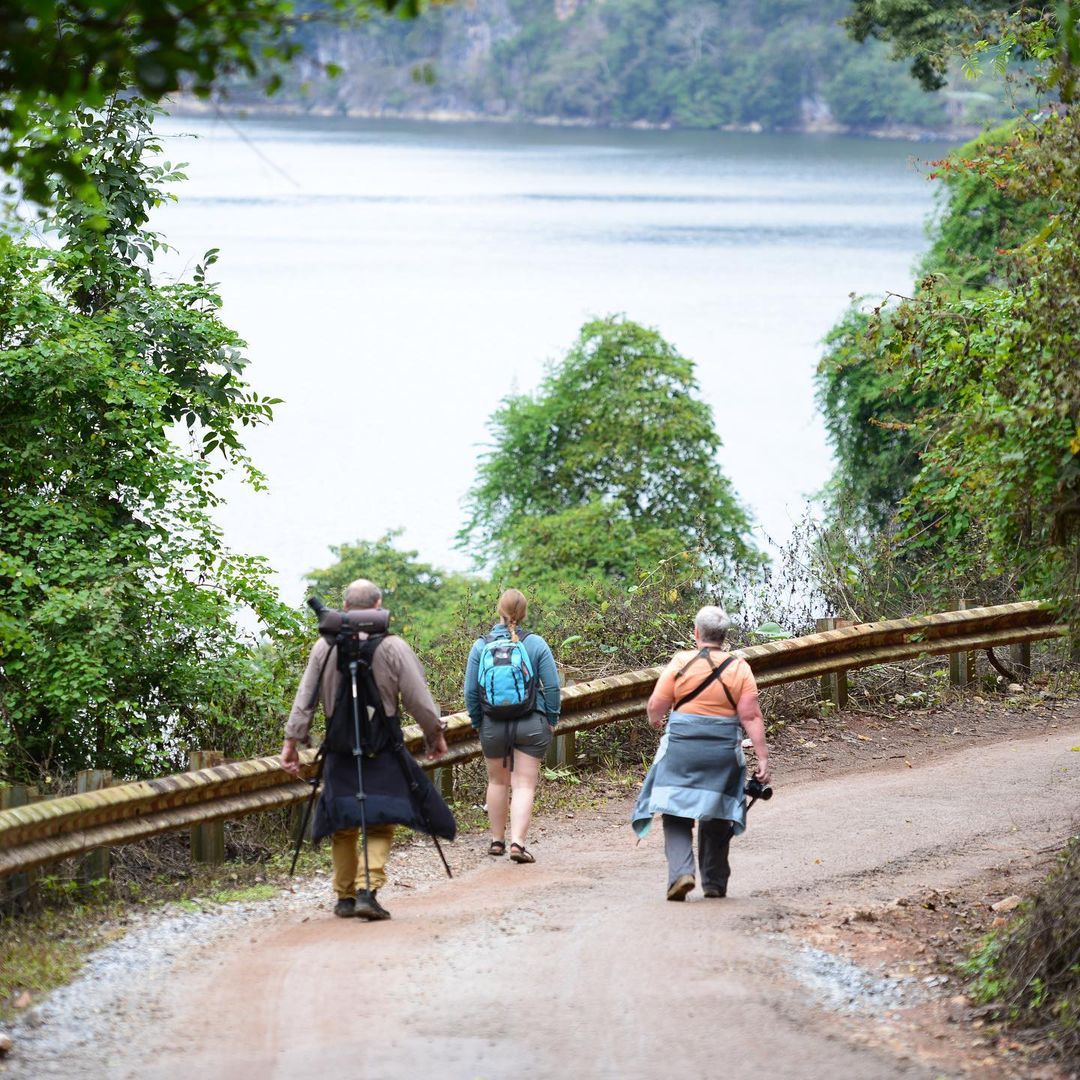 Photo: @elfidw
Photo: @elfidw
Kayaking on Ba Be Lake
To feel the purity of nature at its peak, boating or kayaking on the immense Ba Be Lake for half of a day is an alluring experience that no visitor to Ba Be can resist. For water sport enthusiasts, kayaking is the best way to explore every corner of the lake while guided motor boat tours are made for leisure travelers who want to relax. Rowing through the islets to discover hidden caves and visit fishing villages around. Throw your eyes on the panoramic view of the limestone karsts, and explore some secret corners of tranquil Ba Be lake and the poetic Nang river. With kayaking, you can also get a close look at karsts and into the caves that cannot be accessed by bigger boats.
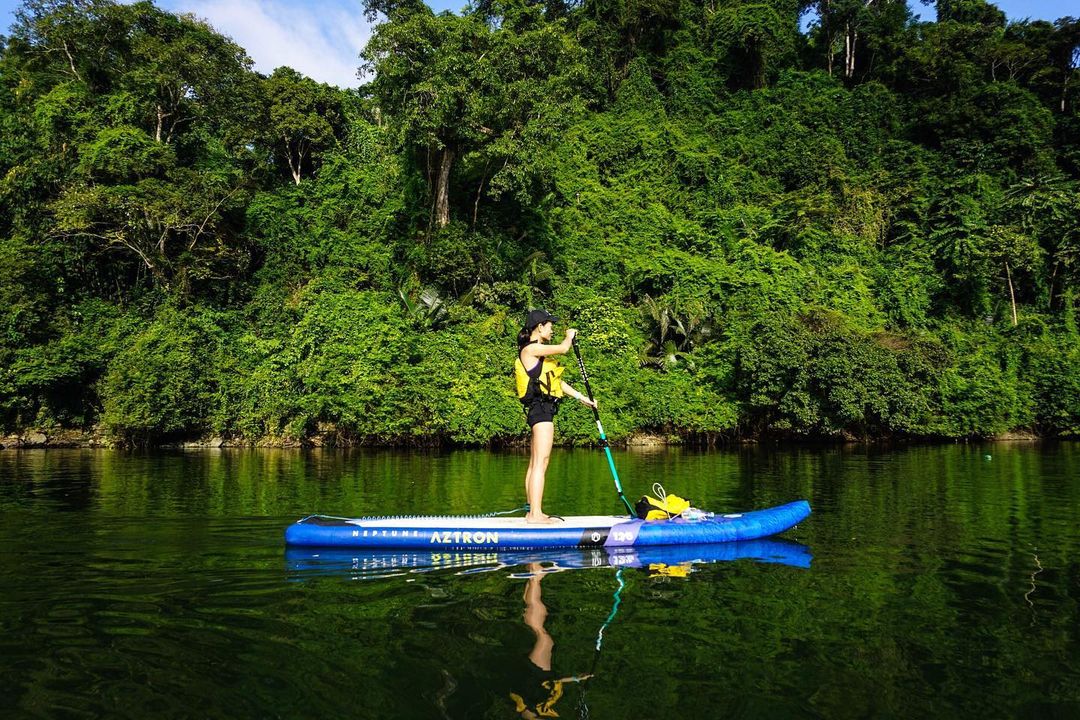 Photo: @sinhsut
Photo: @sinhsut
Biking to discover the land
Discovering the entire national park and surroundings by bicycle deserves to be a priority on your checklist. The enjoyment and relaxation it brings ensure to get over any of your expectations about your trip. From dust to dawn, the rustic and idyllic roads around the national park will melt your heart with breathtaking views of mirror lakes, limestone peaks, thick evergreen forests and peaceful rivers. Beginning your little bicycle tour from Pac Ngoi, you will visit Tay villages, Hua Ma Cave and Silk Waterfall, breath in the fresh air and enjoy the unique, tranquil ambiance only found in the Northern area of Vietnam.
 Photo: @vietnam_adventure_ride
Photo: @vietnam_adventure_ride
Getting an insight into local life of ethnic groups
Humbly residing in Ba Be for hundreds of years are the ethnic minority communities that form most of the dispersed villages surrounding the park. The beautiful hamlets of Ban Cam, Pac Ngoi , and Coc Toc are homes to the natives of Tay. These old wooden houses are still retained over generations in every corner of the village as the way the Tay customs are still practiced by the ethnic minorities living there . Staying a few days with the locals in the rustic family-run homestays, enjoying the local hospitality of villagers, unwind and indulge in peaceful atmosphere, you can learn much more about the unique cultural traits of ethnic groups. During your trip to discover local lifestyle, let the fun loving hosts feast you on the alluring rustic delicacies such as grilled fish, wild chicken, forest vegetable, and fresh fish caught in the streams.
 Tourists visit and explore Ba Be National Park
Tourists visit and explore Ba Be National Park
Accommodation
Ba Be has no shortage of homestays, guesthouses and nearby hotels for tourists to enjoy their journeys to the national park. But spending your days in a local homestay run by ethnic minorities is an indispensable experience, recommended to set priority on your to do checklist. More than a kind of accommodation, it has become a cultural trait in Ba Be in recent years. In the hamlets right at the heart of the land, hospitable locals await you in beautiful houses, feast you on the best local food and take care of your sleep.
Mr. Linh’s Homestay
Resting right on the bank of the Ba Be Lake, this homestay is a little getaway from the outside world. Spending leisure days in rustic wood stilt houses with a palm leaf roof is really worth an endeavor.The house is the harmony combination of nice accommodation and standard facilities. You can enjoy the wonderful ambiance in the house and look out over marvelous landscapes of Ba Be at the same time. The homestay also offers the great chance to get to know more about the Tay culture.
 Mr. Linh’s Homestay
Mr. Linh’s Homestay
Location: Coc Toc Village, Ba Be National Park, Bac Can
Hoa Son Homestay
Resting on the southern shore of Ba Be Lake, this accommodation is well-regarded as one of the best homestays in the main stretch centered around Pac Ngoi village. Boasting panoramic views of the lake from the balconies, it features tidy and comfortable rooms in a quiet ambience, of course, at a cheap price.
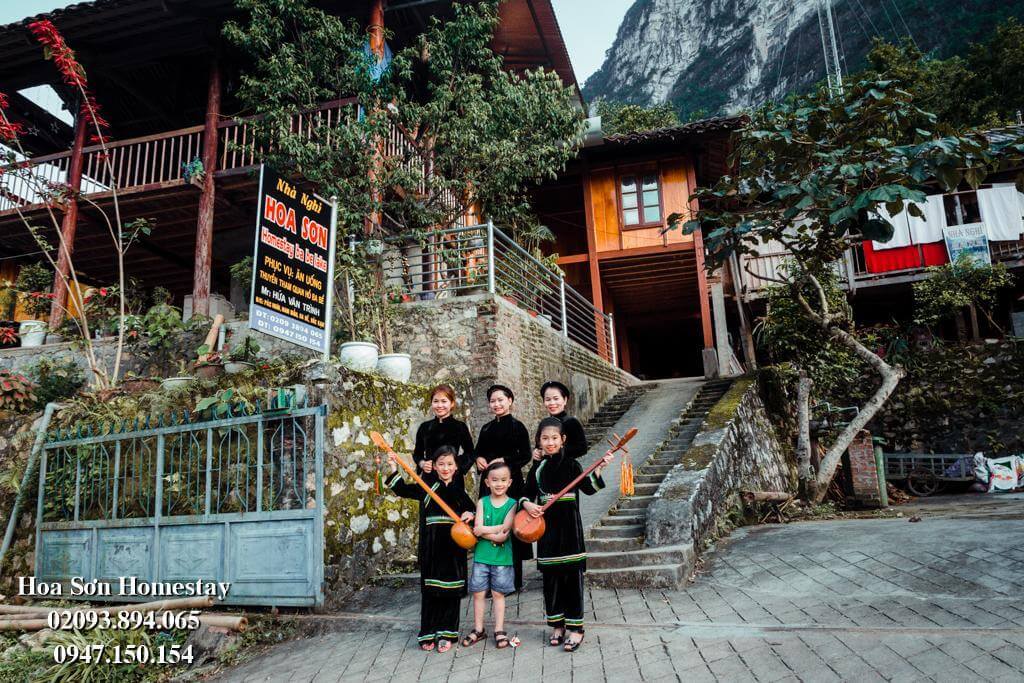 Hoa Son homestay
Hoa Son homestay
Location: Pac Ngoi Village, Ba Be National Park, Bac Can
Related Articles
If you are interested in trekking and similar attractions like Ba Be National Park, you may read the following:
5 most famous national parks of Vietnam
Cuc Phuong considered for world heritage site
9 Best places for trekking in Vietnam
Vietnam camping tips
Useful Information
- Location: Vuon Quoc Gia Ba Be, Bac Kan, Vietnam
- Best for: Family, couple, solo
- Entrance: Free
- Hours: All hours
- Distance to city center: 35.7km (22.2 mi)
[ad_2]
source link



